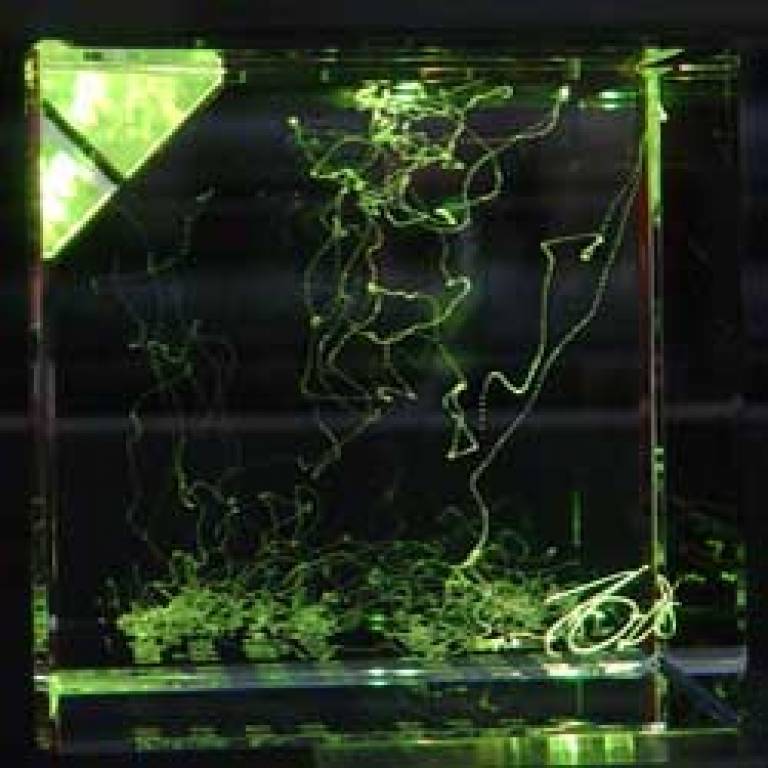Buzz Lightwave
4 February 2008
Links:
 lottolab.org/" target="_self">Dr Lotto
lottolab.org/" target="_self">Dr Lotto
Dr Beau Lotto (UCL Ophthalmology) has designed a unique exhibit of glass, light and bumblebees - part science experiment, part sculpture - to demonstrate the role of history in shaping visual behaviour.
The exhibition, entitled 'Bee Matrix' will be held at the Science Gallery in Dublin, Ireland, from 1 to 9 February as part of its 'Lightwave' festival. The matrix is a glass cube filled with flying bees, which allows the public to observe their flight patterns as they learn to recognise different spatial patterns of coloured artificial flowers.
The matrix contains an array of illuminated discs on one surface, where each disc can be altered in colour so that a huge number of colour options and patterns can be created. When a bee is in the matrix, only one 'flower' type contains nectar, and the bee has to figure out which flower that is under a number of different circumstances of varying difficulty. The bees' flight patterns as they learn to recognise which flowers contain nectar will be recorded in three dimensions and the individual flight paths etched into 200 crystal glass blocks.
These 200 blocks will then be assembled into five towers - each illuminated from below - causing the etched traces to glow. Each tower will show a moment in the bees' history in learning to solve the same perceptual challenges that humans have also evolved to solve.
Dr Lotto said: "Effectively, we are painting with bees, and each tower represents the different stages of the bee's learning history. In the matrix, we can control the relationship between the bee and its environment, development and visual behaviour, which gives us important clues about the principles that are common to all visual systems. Namely, that our past visual experiences are vital - we see what it has proved useful to see in the past and it informs our behaviour.
"These experiments will be unique in scientific terms, run in a public gallery with the findings publishable in a scientific journal - assuming the experiment works, of course! The work truly juxtaposes the creative processes in both science and art. The overall aim of the exhibition is to show the role of history in shaping visual behaviour, and thus the fundamental relationship between the visual mind and its environment."
To find out more, use the links at the top of this article.
Image: The bees' flight patterns etched in glass
Related news:
UCL in the News: Artificial brain falls for optical illusions
 Close
Close

